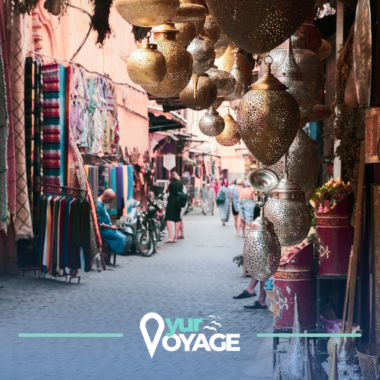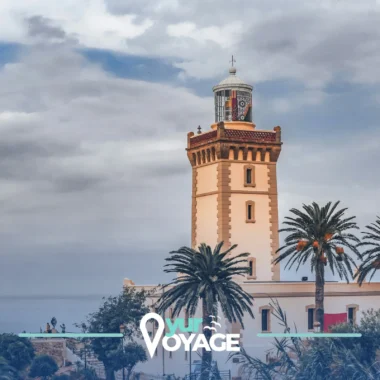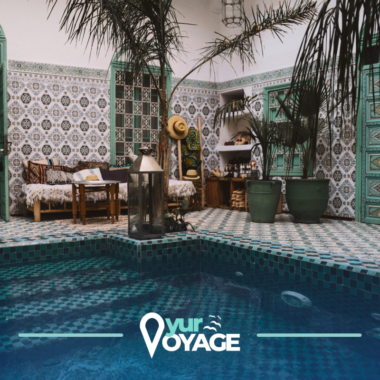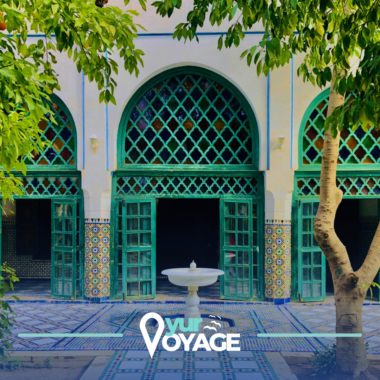For travelers visiting Morocco, the choice of accommodation often boils down to a single question: should I stay in a Riad? The answer is almost always yes. A Riad is not just a hotel; it is an intimate, traditional Moroccan house built around a central courtyard or garden. Staying in one offers an immersive experience, allowing you to step away from the bustling streets of the Medina into a world of quiet serenity, beautiful tiling, and personalized service. This guide will walk you through what Riads are, why they are the best choice, and how to select the perfect one for your trip to Marrakech.
What Exactly is a Riad? A Lesson in Architecture
To understand the Riad experience, you must first understand its architecture. Riads are a hallmark of ancient Moroccan urban design, built to maximize privacy, shade, and tranquility within crowded city walls. They are typically characterized by high, windowless exterior walls that provide security and insulation from the heat and noise of the streets. All windows and balconies face inwards, focusing attention on the serene courtyard.
Architectural Differences: Riad vs. Dar
While Riad is the common term used for guesthouses, technically, there is a distinction often made locally. A Riad (from the Arabic word ryad, meaning garden) is a home built around a lush, square courtyard containing four planting beds, often with fruit trees (citrus, orange) and a central fountain. This design dates back to Persian influence and emphasizes nature. A Dar (meaning house) is built around a courtyard that is generally smaller and more simple, perhaps paved or tiled, and does not necessarily contain a garden. For guests, both styles offer the same intimate guesthouse experience, but looking for a true Riad ensures you get that beautiful, large garden space.
The Hidden Oasis: The Central Courtyard
The central courtyard is the soul of any Riad. This open-air space serves as the heart of the home, providing natural light and essential cooling. Because hot air rises, the courtyard creates a microclimate that can be several degrees cooler than the street outside. This area is the main communal space where breakfast is often served, where guests relax on low sofas, and where the sounds of the city are replaced by the gentle splash of a fountain. This inward-facing design is crucial to the sense of calm and isolation that makes the Riad experience so special.
Why Stay in a Riad? The Unique Experience
Choosing a Riad elevates your trip from simple sightseeing to cultural immersion. It is the best way to receive authentic Moroccan hospitality, which is often lost in larger, international hotels.
Authentic Moroccan Hospitality and Service
Unlike large chain hotels where service is standardized, Riads pride themselves on personalized, family-style hospitality. Riads typically have only a handful of rooms, ensuring the staff (often referred to as the Riad’s “family”) knows your name, your plans, and your preferences. They can assist with unique requests, from arranging an unofficial guide to leading you to the best spice merchant in the Medina. This personal touch fosters genuine connections and allows you to experience the warmth of Moroccan culture firsthand, making you feel more like a welcomed guest than a paying customer.
The Riad as a Culinary Hub
As mentioned in the guide to Moroccan Cuisine, Riads often offer the most authentic and memorable dining experiences. Dinner prepared in a Riad is typically a set, multi-course menu prepared by the house Dada (cook) using fresh ingredients purchased that morning from the local markets. This is your opportunity to try dishes that are not commonly found in tourist restaurants, often served on the courtyard patio or the rooftop terrace under the stars. By dining in-house, you not only enjoy incredible food but also directly support the local economy and traditional culinary arts.
Practical Tips for Choosing and Booking Your Riad
Selecting the right Riad involves balancing location, amenities, and budget. Use these practical tips to narrow down your search and book your perfect stay.
Location, Location, Location: Medina vs. Gueliz
The primary decision when choosing a Riad in Marrakech is neighborhood:
- The Medina (Old City): This is where most traditional Riads are located, nestled deep within the maze of alleyways.
- Pros: Total immersion, walking distance to Jemaa el-Fnaa and the souks, incredible atmosphere.
- Cons: Can be difficult to find (especially at night), requires walking or taking small carts, can be noisy during the day.
- Tip: Look for a Riad that is close to a derb (small street) or a main gate like Bab Aylen for easier taxi access.
- Gueliz (New City): This area offers modern hotels, wide boulevards, and easy access to international brands.
- Pros: Easy taxi access, modern amenities, familiar environment, quieter at night.
- Cons: Lacks the traditional charm and atmosphere of the Medina.
Essential Amenities: Rooftop Terraces and Pools
When reviewing Riad listings, prioritize these two amenities for maximum comfort:
- The Rooftop Terrace: Essential for relaxation and one of the Riad’s greatest assets. It’s the perfect spot for breakfast, watching the sunset over the terracotta roofs of the Medina, and hearing the call to prayer. Ensure the terrace is well-furnished and accessible.
- The Pool: Marrakech gets extremely hot, especially from May to September. A small, cool plunge pool (often called a piscine) in the courtyard or a rooftop pool is a must-have for cooling down after a day of exploring the souks. Always confirm the size and accessibility of the pool before booking if cooling off is a priority.
Booking Tip: Read reviews carefully and pay attention to comments regarding noise levels, as Riads are often close together. Look for Riads with a rating of 9.0 or higher for a reliable experience.







